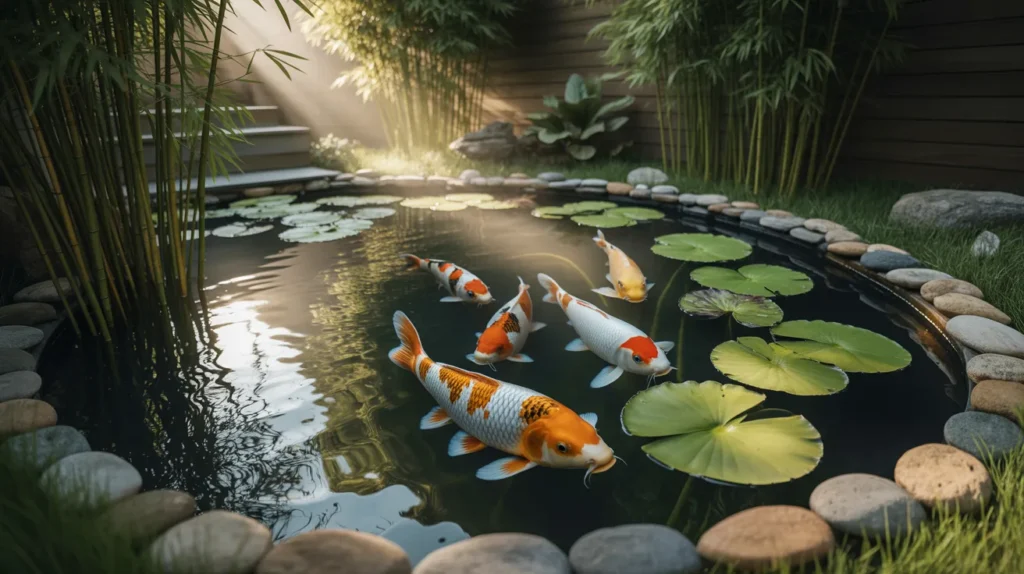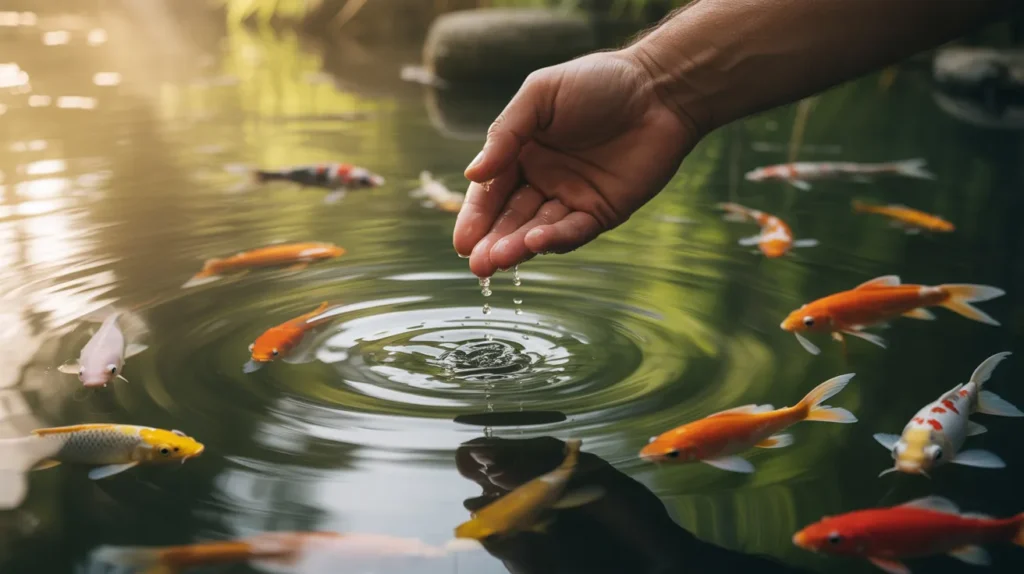Keeping a fish pond thriving year-round in the United States isn’t just about water and fish—it’s about balance. The pond becomes a small ecosystem that breathes, shifts, and reacts to the environment around it. Whether you live in a snowy northern state or a sun-soaked southern one, knowing how to maintain fish ponds in the USA means understanding nature’s rhythm — and learning how to move with it.
The Regional Reality of Pond Care
A pond in Oregon doesn’t behave like one in Texas. That’s why every successful pond owner learns to tailor their maintenance to the local climate.
Why Climate Zones Matter
America’s vast climate diversity means each pond requires its own rhythm of care:
-
Cold regions: The biggest challenge is oxygen. When ice covers the surface, fish rely on a small open hole to breathe.
-
Warm regions: Algae blooms can take over quickly in hot water, suffocating fish and clouding visibility.
-
Coastal zones: Storm runoff and salt drift can subtly change your pond’s chemistry.
Understanding your region’s weather patterns helps you prevent crises before they begin.
The Seasonal Impact on Fish Health
As temperatures shift, so do your fish. In winter, metabolism slows — meaning less food and less waste. Come spring, they surge with energy and appetite. Adapting your maintenance routine to these natural rhythms is what separates a thriving pond from one in constant repair.
Tools Every U.S. Pond Owner Should Have
Behind every serene pond is a toolkit that quietly does the heavy lifting.
The Core Equipment
-
Filters: Mechanical filters grab debris; biological ones turn harmful ammonia into harmless nitrates.
-
Aeration systems: Bubblers, fountains, and waterfalls circulate oxygen — a lifeline for fish during heat or ice.
-
Vacuum or skimmer: Regularly removing sludge and leaves keeps your water clear.
A good rule of thumb? Size your filtration system to handle at least one and a half times your pond’s total volume. That margin prevents water stagnation during peak summer months.
Eco-Friendly Support Tools
Many U.S. pond owners are turning away from chemicals and choosing natural balance. Beneficial bacteria, barley straw extract, and UV clarifiers work with your ecosystem rather than sterilizing it. The result: clearer water, healthier fish, and a pond that sustains itself.

A Year in the Life of Your Pond: Seasonal Schedule
Think of pond care as a rhythm rather than a chore list. Here’s what that rhythm looks like across four U.S. seasons.
🌸 Spring: The Awakening
After winter, your pond stretches back to life.
-
Remove debris and clean filters.
-
Replace about 25% of the water.
-
Resume feeding slowly once temperatures pass 50°F.
-
Test ammonia and nitrite weekly — new feeding means new bacteria activity.
☀️ Summer: Growth & Vigilance
Summer invites life and chaos in equal measure.
-
Keep water oxygenated with air stones or fountains.
-
Shade your pond using lilies or floating plants.
-
Skim debris often to prevent algae takeover.
-
Refresh part of your water every few weeks.
🍂 Autumn: Preparation & Balance
This is your transition season — preparation disguised as maintenance.
-
Cut back on feeding when temps drop below 60°F.
-
Trim dying plants and install netting to catch leaves.
-
Inspect filters, pumps, and hoses before frost sets in.
❄️ Winter: Rest & Protection
Your pond slows, but it still breathes.
-
Use a floating de-icer or air bubbler to keep a hole in the ice.
-
Stop feeding once fish stop surfacing (around 45°F).
-
Monitor ammonia once a month to prevent toxic build-up.
Each small act protects the biological balance you’ve built all year long.

Troubleshooting Common U.S. Pond Problems
Even the best-maintained ponds hit snags. The trick is recognizing the signs early.
Evaporation, Debris & Predators
-
Evaporation: Expect a couple inches lost weekly in hot weather. Refill only with dechlorinated water.
-
Debris: Organic matter left to rot poisons water. Net it out regularly.
-
Predators: Herons, raccoons, or cats can wreak havoc. Netting or motion-activated sprinklers work wonders.
Water Quality & Disease Prevention
Healthy ponds depend on invisible chemistry.
-
Keep pH between 6.8 and 8.0.
-
Quarantine any new fish for two weeks.
-
Reintroduce beneficial bacteria after heavy rainfall.
Your goal isn’t a perfect pond — it’s a stable one. A system that adjusts itself is far more resilient than one that constantly needs fixing.
Building Long-Term Pond Health
Pond maintenance is a relationship, not a task. When done right, it becomes a self-sustaining ecosystem that rewards patience and care.
Designing for Sustainability
Choose plants and fish that naturally coexist with your local environment. Native reeds, irises, and cattails filter water while offering shade. Bottom dwellers like koi or catfish stir debris and keep oxygen circulating.
Biodiversity isn’t decoration — it’s strategy.
Preparing for Extreme Weather
Climate unpredictability is the new norm, so build flexibility into your design.
-
Flood zones: Install overflow drains and raise electrical gear.
-
Drought areas: Use rainwater catchment systems.
-
Storm-prone states: Anchor pumps and remove floating décor before impact.
The more adaptable your setup, the fewer emergencies you’ll face.

Frequently Asked Questions
Q: How often should I clean my filters?
Usually every 2–4 weeks during warm months. Rinse filters in pond water, never tap water — chlorine kills the good bacteria that keep your pond stable.
Q: How deep should my pond be in colder states?
At least 3–4 feet. It provides insulation and prevents total freezing.
Q: Is tap water safe for refilling?
Yes — as long as it’s dechlorinated before use.
Q: What’s the easiest way to control algae?
Combine UV clarifiers with natural shade plants. Reduce direct sunlight, and you’ll cut algae by half.
Q: Can fish survive outdoors all year in the U.S.?
Yes. Koi, goldfish, and similar species adapt beautifully when water stays oxygenated and ice-free.
Products / Tools / Resources
-
Dechlorinator: Seachem Prime or API Tap Water Conditioner
-
Aeration Systems: Alpine Corporation 3100 GPH Submersible Water Pump or Kasco Marine
-
Biological Additives: Microbe-Lift PL Beneficial Bacteria
-
Testing Kits: API Freshwater Master Test Kit
-
Eco Accessories: Barley straw extract, UV clarifier bulbs, floating plants
If you need ideas about building ponds, take a look at “The Ultimate DIY Koi Pond Setup: Build a Backyard Oasis Step-by-Step”.
